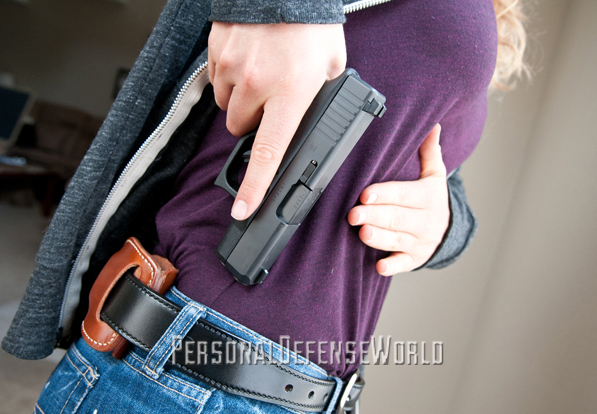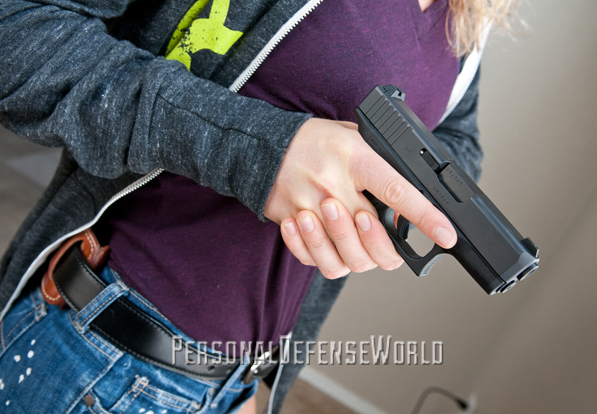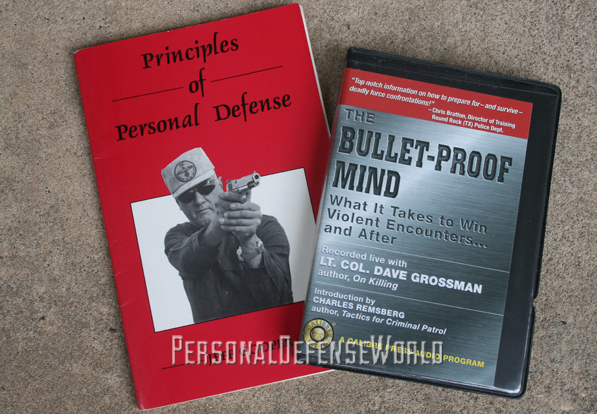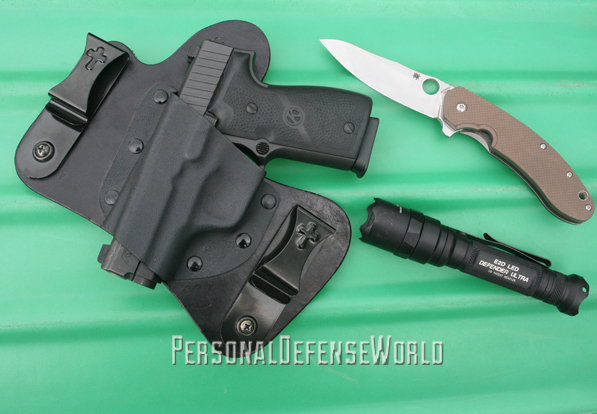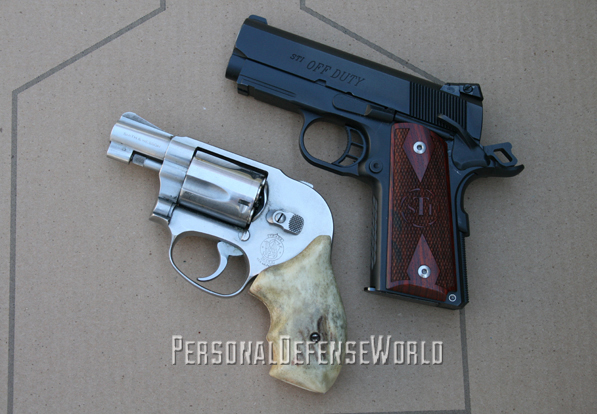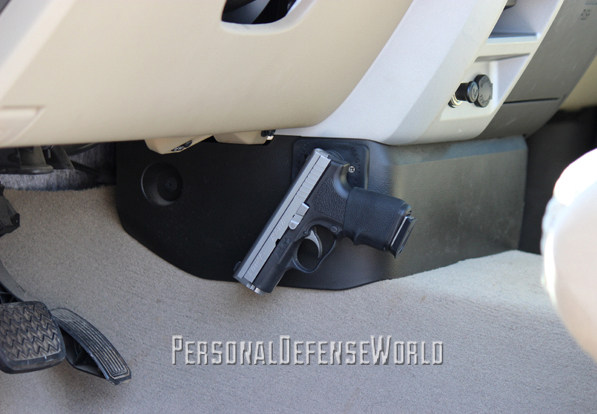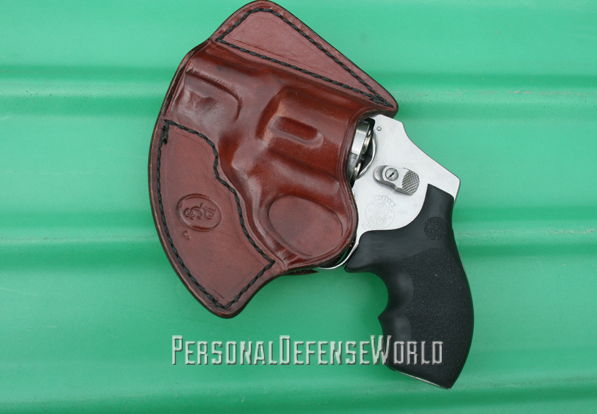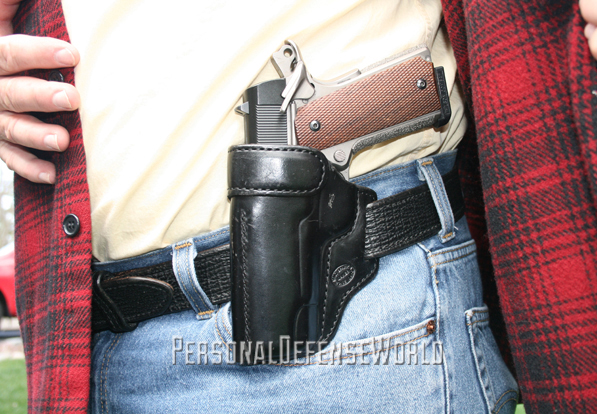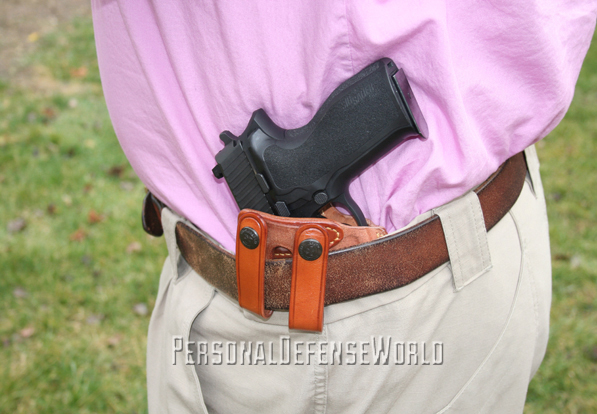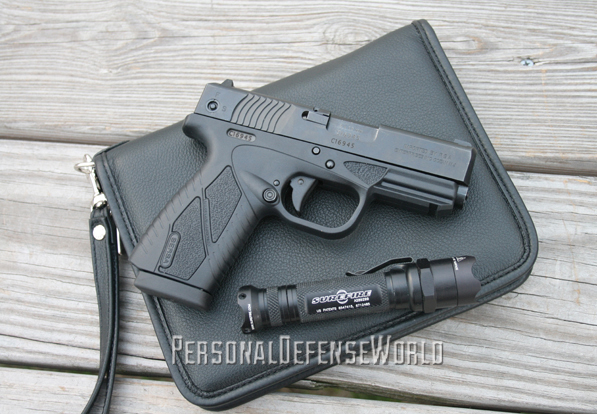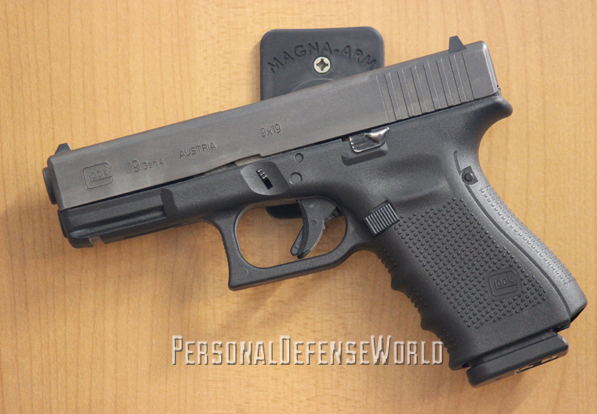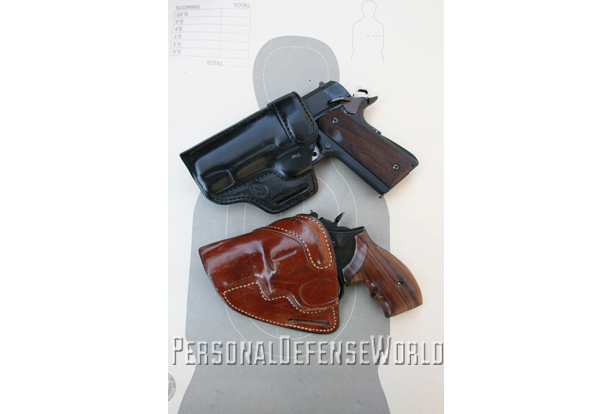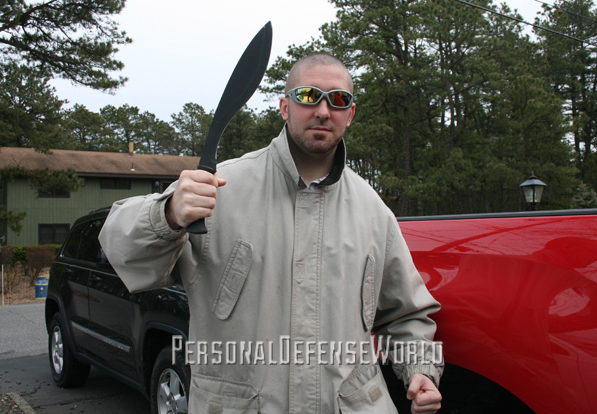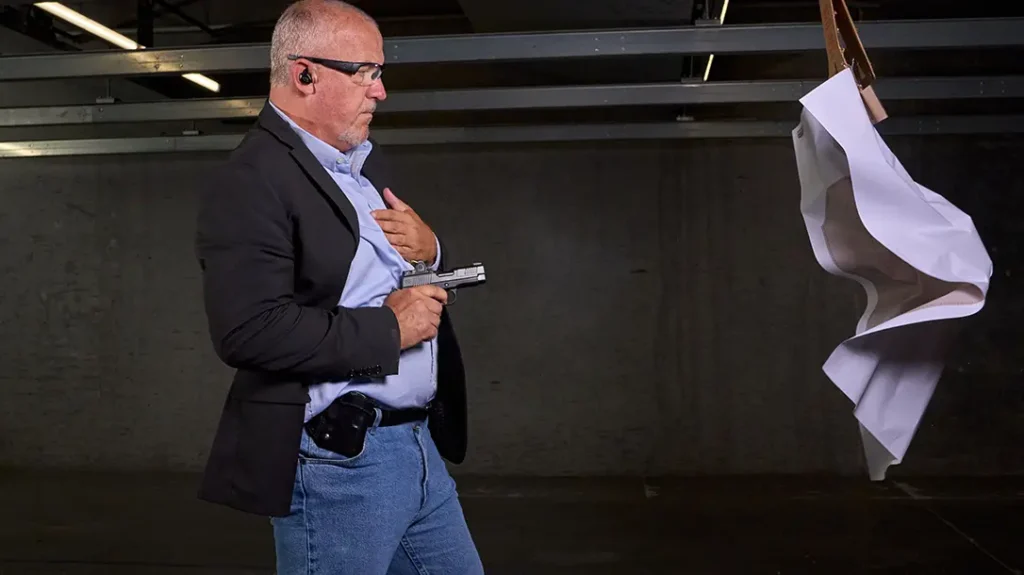There’s the perception of concealed carry, and then there’s practical concealed carry.
In 1987, Florida passed legislation allowing its citizens to carry a concealed handgun. In short order, the naysayers predicted the streets would run red with blood, as every petty dispute would escalate into gunplay. That did not prove to be the case, and guns in the hands of good guys and girls have helped reduce violent crime. Since that time, many states have followed Florida’s lead and now allow their citizens to exercise control over their own destiny.
I wouldn’t necessarily categorize many folks who carry a concealed firearm as gun hobbyists. Their concern is solely personal defense, and they typically have many questions about training and gear. Throughout my career as a law enforcement trainer, I have tried to break down the important elements of personal defense into priorities. The priorities remain the key to success with any weapon system, and they include mindset, tactics, skill and equipment.
Advertisement — Continue Reading Below
Retiring from active law enforcement service has caused me to reconsider my priorities, but in reality, little has changed. I might look at things in a somewhat different light, but the same priorities that kept me safe on the job continue to work.
Totally Aware
A gun alone will not keep you safe. Consider that you might actually have to use your firearm to protect your life or your loved ones. Some people feel that merely displaying a weapon will avert violence. Don’t count on it! Quite frankly, using a firearm to defend your life is pretty nasty stuff and comes with heavy baggage. If you’re not prepared to use extreme violence to defend your life, you might want to reconsider carrying a concealed firearm.
Going armed in polite society demands that you maintain a high state of aware-ness at all times. Be aware of all things going on around you and try to assess any questionable person’s intentions. While some people might consider this mindset to be paranoid, I prefer to think of it as totally aware. Remember, wherever you go, there is already one gun at the scene: yours. Don’t get caught by surprise. Be aware; be willing.
Advertisement — Continue Reading Below
Simple Tactics
Tactics are short-term actions that we use to put our opponent at a disadvantage. Some common examples could include the use of cover and concealment, movement, controlling the light and verbalization. Good tactics are street proven, simple and make sense. If something sounds too complicated, it probably is, and you won’t be able to do it under life-threatening stress. Remember, simple is good.
A very fundamental tactic is cover. Cover can be defined as something that will stop the bullets being fired in your direction. Learn to recognize cover and use it whenever possible. The harsh reality of many street confrontations is that they happen in very close proximity and movement to cover is not an option. In some scenarios, a lateral step or two behind cover or an obstacle may throw your adversary off and buy you a precious second to counterattack.
If you carry a concealed firearm, I also strongly suggest that you carry a small flashlight. Criminal behavior is at its highest during the hours of darkness, and a light helps us make an informed decision. Lights can be used for routine illumination, navigation, locating potential problems and as a subtle measure of force. Most importantly, a light will help
us assess potential threats.
Advertisement — Continue Reading Below
Trained & Ready
Skill at arms encompasses both practical marksmanship and gun handling. Practical marksmanship might be best defined as the sum total of speed, power and accuracy, which gives us the ability to place decisive hits on a threat. Gun handling refers to all those collateral skills needed to keep our guns in the fight and includes drawing, combat loading and clearing stoppages.
People who carry a concealed firearm for personal defense need to be proficient in drawing the handgun from under a covering garment and quickly putting multiple hits on one or more threats. Considering that many real events take place at arm’s length, one should be familiar with some basic empty-hand techniques as well. Like it or not, you may have to fight it out before you can access your gun.
These skills will not come your way by osmosis. I had the benefit of a thorough and comprehensive firearms training program when I got into law enforcement, along with frequent maintenance intervals throughout my career. By all means, get some training from a good instructor. There are a number of highly regarded schools that offer training in defensive pistolcraft. The downside is that they can be quite expensive once you factor in travel, lodging and meals. But, if you look hard enough, you will no doubt find some very talented instructors in your area that can get you up to speed. Books and videos are great, but they are an adjunct—not a substitute for hands-on training.
Advertisement — Continue Reading Below
The Right Stuff
What sort of gun is best for concealed carry? That’s a pretty personal decision, and many factors, such as climate, clothing worn, social setting, build and commitment to training, come into play. I would, however, make a strong case that your concealed carry firearm be chambered for a legitimate service cartridge, such as the .38 Special, 9mm, .40 S&W or .45 ACP. With a good expanding bullet, stopping potential is far superior to the small, hideout pocket pistols often used for self-defense.
There is, of course, a mind-boggling array of action types from which to choose, which no doubt confuses the non-enthusiast. Single-action pistols such as the 1911 and even traditional double-action pistols are best utilized by individuals who make a serious commitment to training. Striker-fired pistols like the Glock and Smith & Wesson M&P are yet another option, but their short, relatively light triggers come with their own set of caveats. Second-generation double-action-only (DAO) compacts and subcompacts from Heckler & Koch and Sig Sauer are certainly viable considera-tions, as are the offerings from Kahr Arms, which are optimum for concealed carry.
While not trendy by contemporary standards, don’t discount a small-or medium-frame DA revolver. Their modest capacity is rarely an issue for personal defense, and the revolver’s simple man-ual of arms makes them a good choice for the non-enthusiast.
Advertisement — Continue Reading Below
Don’t cut corners on holsters. A good holster is durable, provides fast access and remains comfortable enough for all-day carry. A quality often forgotten is that it must conceal the gun under the clothing worn. To my thinking, the best options for general concealed carry include strong-side belt holsters and inside-the-waistband (IWB) holsters.
Keep it Discreet
Don’t look like a guy or girl carrying a gun. Advertising the fact that you are armed doesn’t cause the bad guys to give you a wide berth. On the contrary, it merely red flags you as the first person to be taken out. Avoid that “contractor casual” look of BDUs, vest, boots and stylish sunglasses. Don’t look like somebody carrying a gun! Look like a jock, a biker or a nerd and get in under the radar. If the gun comes out, it should be a surprise.
Firms such as BlackHawk, Woolrich and 5.11 market lines of casual clothing optimized for discreetly carrying hand-guns. Their shirts are especially useful in warm weather and can help camouflage even a full-size service pistol.
Advertisement — Continue Reading Below
The decision to go armed in modern society should not be taken lightly. By taking up the gun, you have a greater responsibility to yourself, your family and all those around you. In addition to being proficient with your firearm, you must also be familiar with the laws relating to use of force and personal defense. Unlike the police, who are expected to confront problems, the armed citizen is obligated to go out of his or her way to avoid confrontation. This is best accomplished by steering clear of stupid places, stupid people and not doing stupid things.
A concealed firearm gives you options and a means of controlling your immediate environment. Get equipped, get trained, remain alert and stay safe.
BUY NOW! AT www.personaldefenseworld.com/subscribe/handguns-buyers-guide/.
Advertisement — Continue Reading Below
